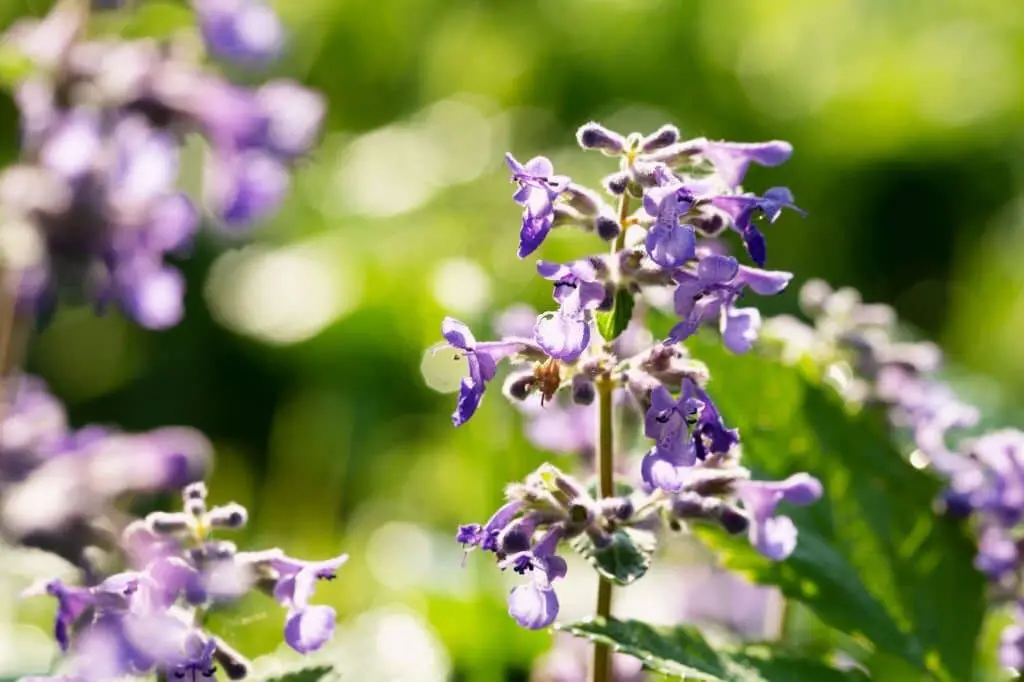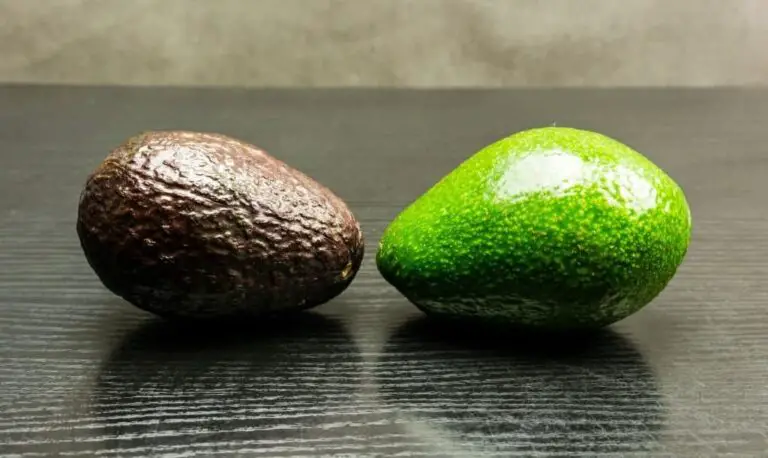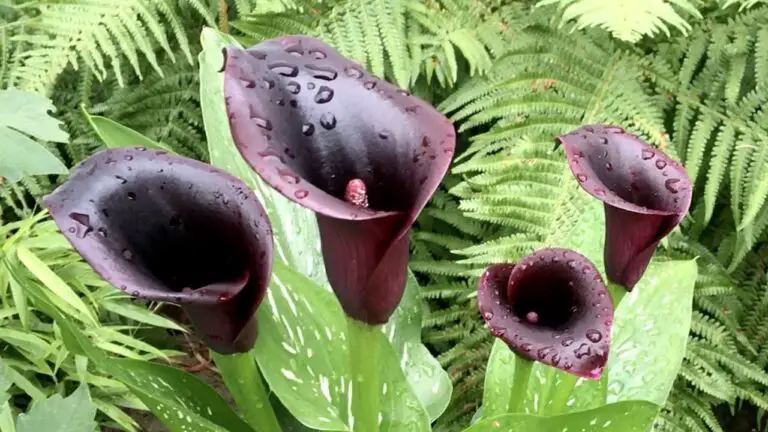9 Beautiful Plants That Look Like Lavender But Arent (With Pictures)
If you’re seeking a stunning plant with a similar purple tone to lavender, but don’t want to deal with the upkeep of a live plant, artificial plants are an excellent option. One of our top picks is the lavender-lookalike variety, which offers a touch of elegance and sophistication without requiring constant maintenance. In this blog post, we’ll explore nine beautiful plants that share a similar appearance to lavender, but aren’t actually lavender.
For those who want to add a pop of purple to their home or office, these alternatives offer a range of options. From herbs like basil and rosemary to flowering plants like wisteria and Russian sage, there’s something for everyone. Whether you’re looking to create a calming atmosphere or simply want to bring some natural beauty into your space, these artificial plants are sure to impress.
Beautiful Plants That Look Like Lavender But Aren’t
Basil.

When thinking of Italian cuisine, one herb often springs to mind: basil. It’s no wonder why – this fragrant annual plant plays a starring role in many beloved dishes, from classic pizzas and pasta recipes to vibrant salads like caprese. But basil’s appeal extends far beyond the kitchen. Its lush green leaves and pungent aroma can add visual appeal and depth of flavor to your outdoor space. While sweet basil remains the most well-known variety, its brethren offer a wealth of diversity.
For instance, lemon basil or Thai basil can transport you to a field of lavender with their subtle flavors and intoxicating scents.
Catmint (Nepeta cataria).

Catmint, also known as Nepeta, is a member of the mint family and boasts a range of characteristics that make it an attractive addition to any garden. This perennial herb grows up to three feet tall, featuring lavender-hued flowers and green leaves with a potent aroma when crushed. Native to Europe and Asia, catmint has become naturalized in North America and is often used in herbal teas and as a natural insect repellent.
One of its standout features is its ability to thrive without the need for excessive maintenance, making it an ideal choice for busy gardeners. If you’re looking for a plant that offers similar coloration to lavender but with a distinct identity, catmint is definitely worth considering. With its ease of cultivation and availability at nurseries or online, it’s never been easier to bring this fragrant beauty into your garden.
For the more adventurous gardener, seed propagation is also an option, offering a fun and rewarding experience. Ultimately, catmint offers a unique combination of characteristics that set it apart from other plants. Its aromatic properties, drought tolerance, and pest-resistance make it an excellent choice for those seeking a low-maintenance yet visually stunning addition to their garden.
In comparison to lavender, the primary difference lies in catmint’s enhanced resilience to pests and diseases. If you’re looking for a more robust lavender alternative, catmint is undoubtedly a top contender.
Meadow sage (Salvia nemorosa).

Meadow sage, a member of the Lamiaceae family, boasts over 750 species of flowering plants. Its name originates from the Latin word salvere, meaning ‘to save’, referencing its healing properties. This perennial herb grows up to two feet tall, featuring oblong leaves approximately two inches long and pink, purple, or white flowers that bloom in spikes. Native to Europe, meadow sage has naturalized in North America, thriving in full sun and well-drained soil.
Its versatility extends beyond culinary uses, as it can be used fresh or dried, and is also employed in cosmetics, incense, and magic/spiritual practices. Notably, meadow sage remains an evergreen, retaining its leaves year-round, although they may turn brown or bronze in cold climates, only to regreen in spring. In comparison to lavender, meadow sage stands out as a taller plant, reaching up to two feet, whereas lavender grows around a foot tall.
The former boasts blue or purple flowers that bloom in summer, whereas the latter produces pink or white blooms in spring. While both plants are perennials, meadow sage is native to Europe, while lavender hails from the Mediterranean region. The two also differ in their sunlight and soil preferences, with meadow sage requiring full sun and well-drained soil, and lavender preferring partial sun and similar soil conditions.
In terms of maintenance, meadow sage proves relatively low-maintenance, being less susceptible to pests or diseases and not needing frequent fertilization. Lavender, on the other hand, demands a bit more attention, as it is prone to root rot and requires more frequent fertilization. When selecting between these two plants for landscaping purposes, it’s crucial to consider their unique characteristics, as both can be beautiful additions to any garden.
Pitcher Sage (Salvia azurea).

Both Pitcher sage (Salvia pitcheri) and lavender (Lavandula angustifolia) are aromatic plants with a range of uses in herbalism, but they exhibit distinct differences. A key distinction lies in their growth habits: Pitcher sage forms dense, upright clumps up to three feet tall and wide, while lavender grows more sprawlingly, reaching a maximum height of two feet.
The leaves of the two plants also differ, with Pitcher sage’s being lance-shaped and covered in fine hairs, whereas lavender’s are linear and smooth. Furthermore, their flowers display distinct morphologies – Pitcher sage produces tubular blooms ranging from white to purple, whereas lavender bears spherical flowers in hues of pale pink to purple.
In addition to these visual differences, the plants also possess unique scents: Pitcher sage emits a camphor-like aroma, while lavender has a sweeter, more floral fragrance. These distinct characteristics are reflected in their uses, with Pitcher sage employed to alleviate digestive issues and sore throats, whereas lavender is often used to treat anxiety and insomnia.
Purple Giant Hyssop.

While sharing some visual similarities with lavender, Purple Giant Hyssop boasts its own unique characteristics. Measuring up to six feet in height, this deciduous plant features large leaves and blue or violet flowers that bloom during the summer months. Its ornamental value is undeniable, making it a valuable addition to any garden. One notable difference between Purple Giant Hyssop and lavender lies in their botanical families.
Lavender belongs to the mint family, boasting aromatic flowers and leaves, whereas Purple Giant Hyssop is part of the hyssop family. Both plants are prized for their fragrance and visual appeal, but they diverge significantly when it comes to their evergreen or deciduous nature. Lavender, being an evergreen, retains its foliage year-round, whereas Purple Giant Hyssop sheds its leaves seasonally.
Additionally, lavender boasts a higher oil content than Purple Giant Hyssop, making it suitable for aromatherapy and natural insect repellent applications. In contrast, Purple Giant Hyssop’s tannin concentration is notably higher than lavender’s, rendering it useful as an astringent or preservative.
Purple Salvias.

Despite sharing many similarities, lavender and purple salvia plants have distinct characteristics that set them apart. Both belong to the mint family, boast aromatic leaves, and produce stunning blooms in shades of purple and blue. However, it’s their flower structures that truly differentiate these two species: lavender boasts tubular flowers, whereas salvia features two-lipped blooms.
For gardeners seeking a low-maintenance alternative to lavender with similar visual appeal, purple salvia is an excellent choice. These resilient plants are simple to cultivate and care for, and will add a vibrant splash of color to your outdoor space.
Rosemary.

Rosemary (Rosmarinus Officinalis) is a perennial herb characterized by its woody stems, evergreen leaves with a fragrant aroma, and an array of colorful flowers in shades of white, pink, purple, and blue. Native to the Mediterranean region, rosemary has been cherished for centuries as a culinary delight and ornamental addition to gardens.
While rosemary is often compared to lavender due to their shared aromatic qualities, they are actually distinct plants with unique characteristics.
As members of different botanical families – mint family for rosemary, and lavender family for lavender – these herbs exhibit distinct differences in their growing requirements. Lavender thrives in full sun and well-drained soil, whereas rosemary can tolerate partial shade and requires more moisture than its lavender counterpart.
Russian Sage (Perovskia atriplicifolia).

Russian sage may be an unfamiliar plant to many, but it’s actually a close relative of lavender. This perennial herb hails from central Asia’s steppes and has been employed in folk medicine for centuries, tapping into its unique properties. The plant itself is quite striking, reaching heights of around three feet with leaves that are a striking blue-green hue covered in white downy fuzz. In the summer, tiny blue blooms burst forth, adding to the plant’s charm.
What’s more, Russian sage is incredibly resilient and can thrive in dry conditions without requiring much water or attention – making it an ideal choice for busy gardeners or those new to planting. Furthermore, its deer- and rabbit-resistant qualities make it a great addition to any landscape, providing a low-maintenance yet attractive feature.
Wisteria.

Wisteria, with its stunning beauty and intoxicating fragrance, is a versatile addition to any garden. Its vibrant blooms come in a range of colors, but the most sought-after hues are undoubtedly purple and white. As an impressive vine, it has the ability to sprawl quite extensively, making it essential to allocate sufficient space for it to unfurl its full majesty.
FAQs
Is Russian Sage a type of lavender?
While many might assume Russian Sage to be a variant of lavender, this assumption is actually quite incorrect. Both plants may seem familiar due to their shared membership in the mint family (Lamiaceae) and similar visual characteristics. However, Russian Sage (Perovskia atriplicifolia) has its own distinct identity and should not be considered as a type of lavender.
Is wisteria and lavender the same?
While it’s understandable to confuse the two, wisteria and lavender are distinct plants with unique characteristics. Wisteria is a climbing plant that thrives in the pea family, boasting large, glossy leaves and thick, woody stems. In contrast, lavender is a member of the mint family, featuring small, silvery-green leaves and slender, delicate stems. The flowers of these two plants also differ significantly.
Wisteria’s blooms typically take on a purple or white hue, whereas lavender’s are characterized by their pale lilac color.
Are sage and lavender related?
While it may not be immediately apparent, sage and lavender are indeed related. Both herbs belong to the mint family, sharing several common characteristics. One of their most notable similarities is their potent aromatic properties, making them suitable for aromatherapy applications.
However, these two herbs also exhibit distinct differences. Sage boasts a more robust, pungent flavor profile, whereas lavender’s fragrance is often described as floral and subtle.
Furthermore, sage tends to be used more frequently in savory dishes, while lavender is often incorporated into sweet treats and desserts.
What does lavender look like when it starts to grow?
As the spring season unfolds, lavender begins to unfurl its delicate charm. Initially, the plant produces small, emerald green leaves that twist and turn in a mesmerizing spiral pattern. At the heart of each leaf lies a tiny bud, which will eventually blossom into a fragrant, deep purple flower. The intoxicating aroma of these blooms is nothing short of captivating.
Lavender’s versatility knows no bounds – it can be distilled into essential oils, woven into potpourris and sachets, or incorporated into an array of soaps and cosmetics.
Conclusion
In conclusion, we’ve explored some fascinating plants that share similarities with lavender, despite belonging to different families. If you’re seeking an alternative to this popular herb or simply looking to diversify your garden’s flora, these options are definitely worth considering. With their unique characteristics and benefits, they can enrich your outdoor space and provide a delightful surprise for the senses.
Thank you for joining me on this journey of discovery, and I hope you’ll take the inspiration back to your own garden!
Related Posts
When it comes to flower delivery, understanding gratuities for your floral courier is crucial. While tipping isn’t always expected, a small gesture of appreciation can go a long way in ensuring a positive experience. On the other hand, if you’re interested in cultivating a unique career, becoming a plant breeder requires a step-by-step approach. From identifying desirable traits to cross-pollination techniques, we’ve got you covered.
Meanwhile, for those with partial shade gardens or containers looking to add some vibrancy, colorful perennials are the way to go. Vinca plants, in particular, can bring beauty and life to even the shadiest of outdoor spaces. If you’re fascinated by low-maintenance houseplants, growing and caring for African violets is a great starting point. Whether you’re a seasoned gardener or just starting out, we’ve gathered valuable insights and tips to help you achieve your floral goals.






